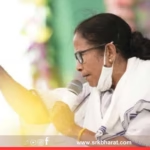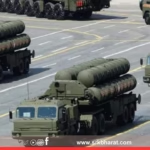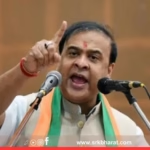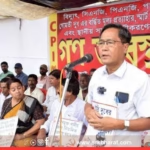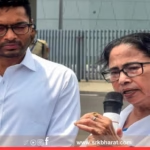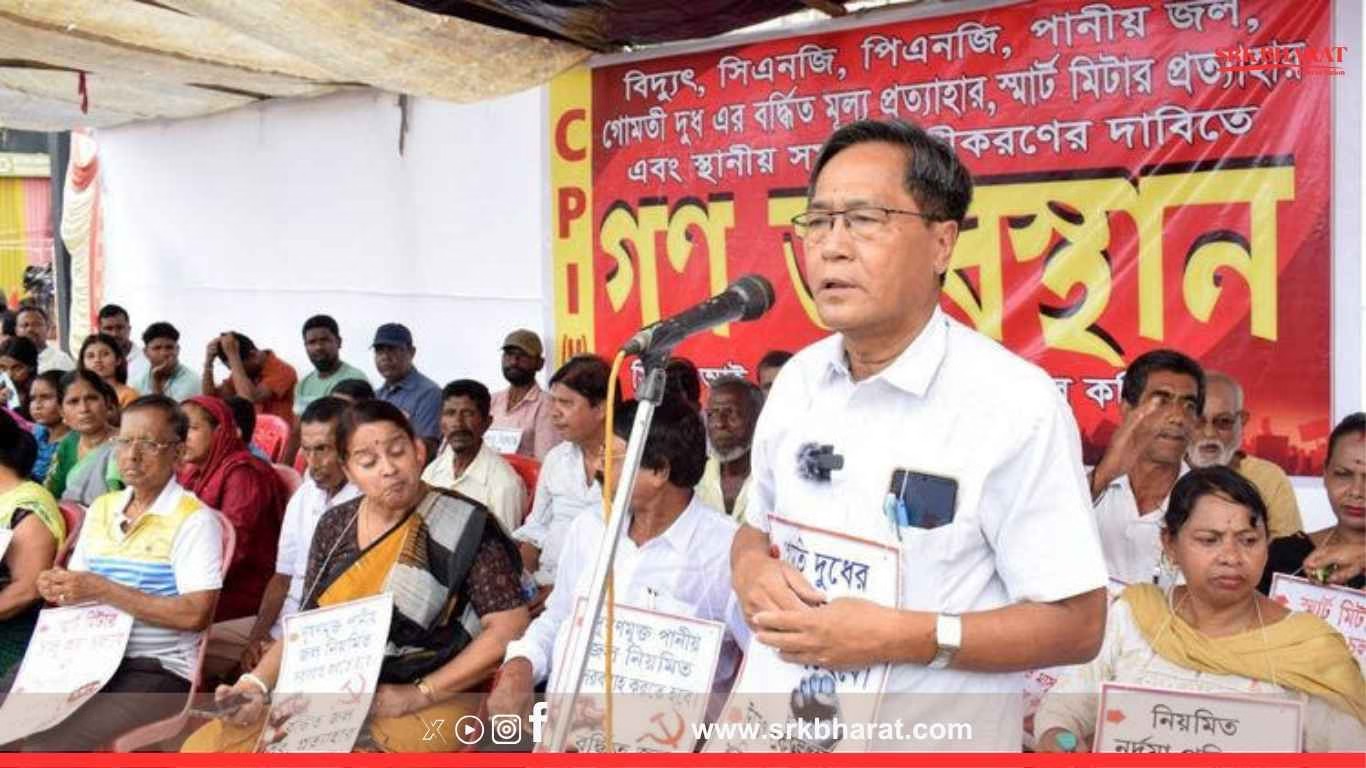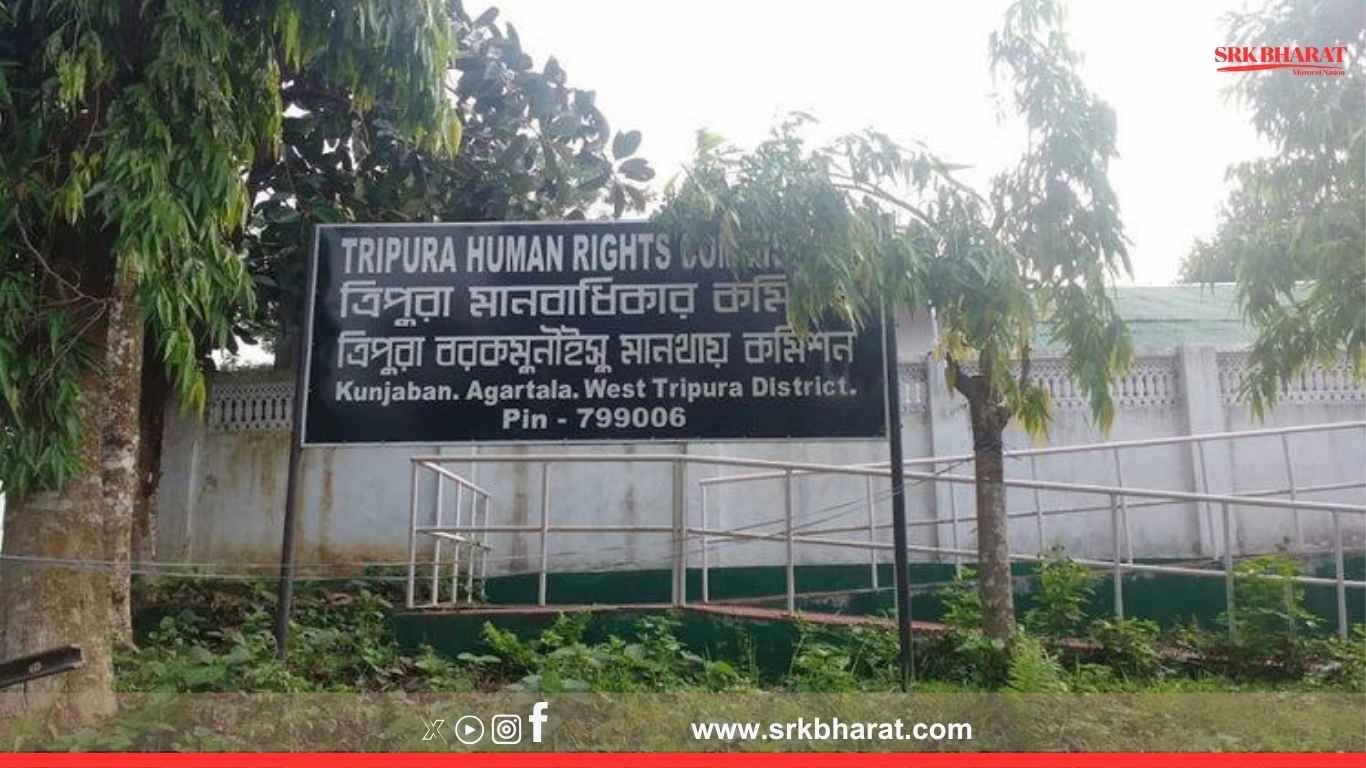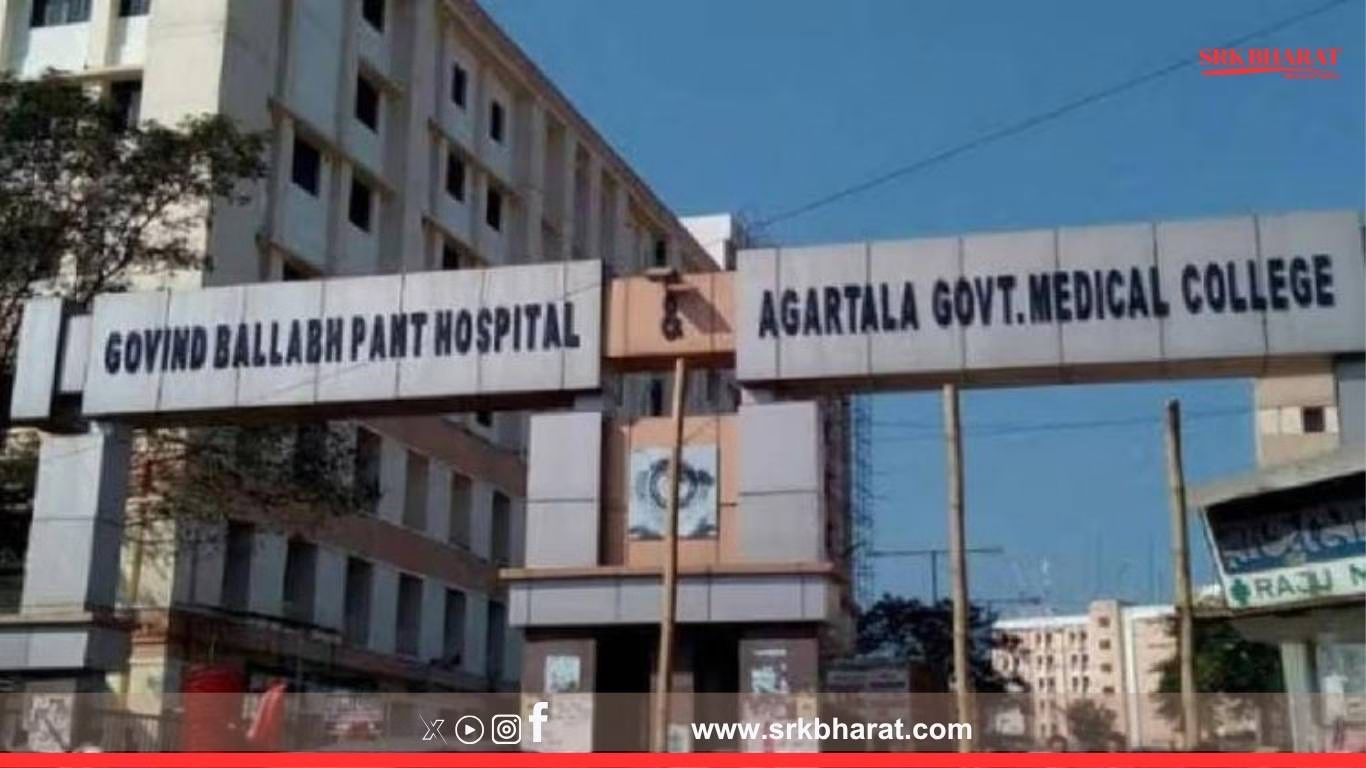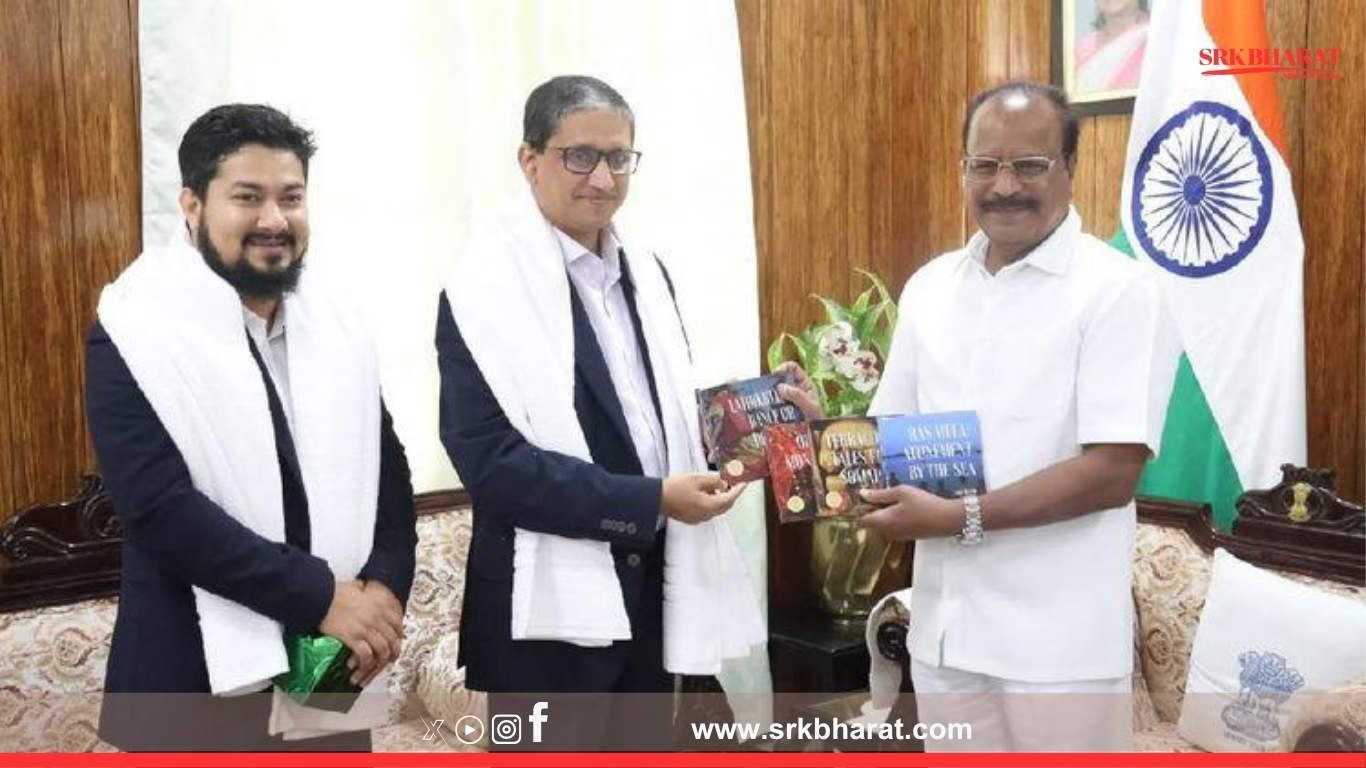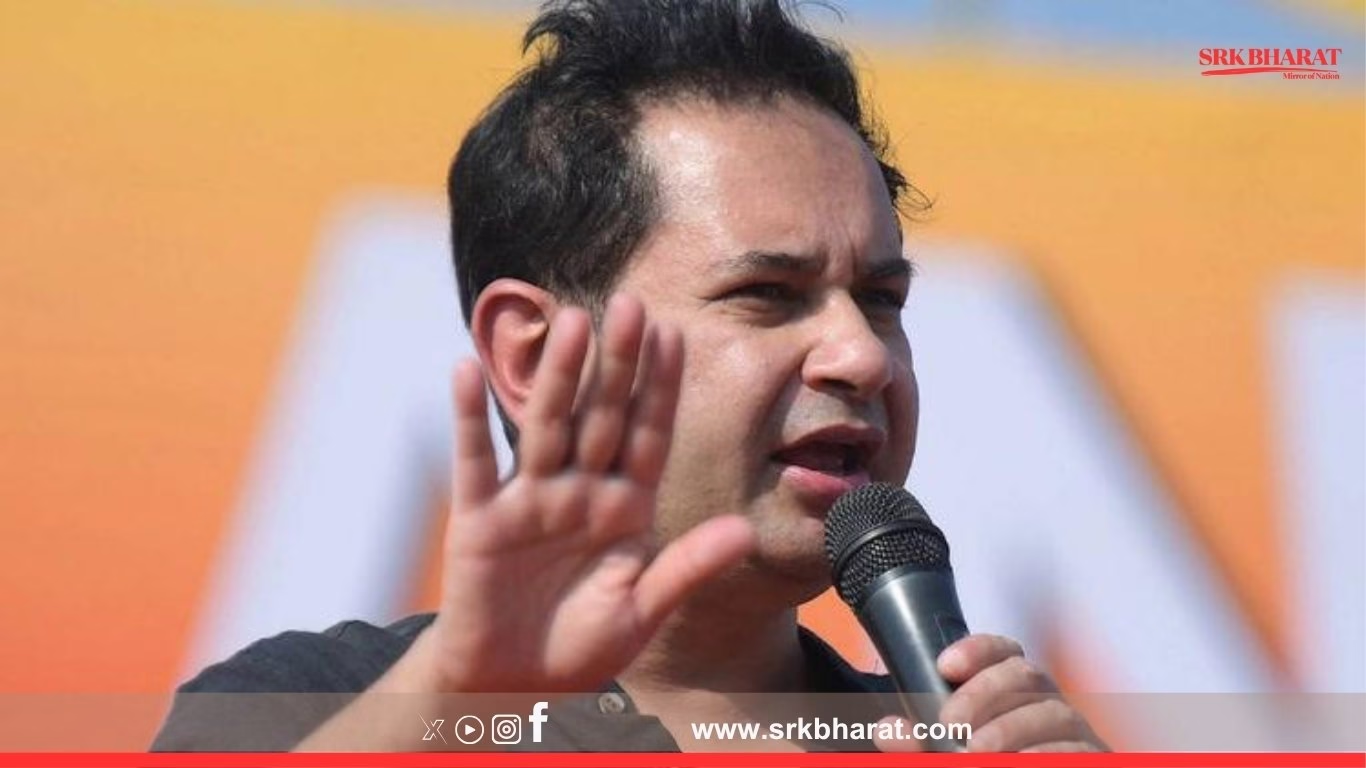Tripura’s political landscape is witnessing a resurgence of the Communist Party of India (Marxist), with Leader of the Opposition (LoP) Jitendra Choudhury asserting that the CPI(M) has not only regained lost ground but is also poised for a strong return to power. Speaking to the media at a gathering in West Tripura, Choudhury confidently declared that the party’s organizational strength has been revitalized and public sentiment is once again aligning with the Left.
This renewed optimism stems from a mix of grassroots mobilization, growing discontent with the BJP-led government, and a rejuvenated cadre-based movement across rural and urban constituencies. As the state approaches the 2028 Assembly elections, CPI(M)’s resurgence is being closely monitored by political analysts and rival parties alike.
CPI(M) Eyes a Comeback After Political Recession
The 2018 state assembly elections marked a historic shift in Tripura politics, with the BJP dethroning the Left Front after 25 years of rule. However, since then, internal conflicts within the BJP, governance issues, rising unemployment, and alleged undemocratic suppression of opposition voices have created space for the Left to reassert itself.
Jitendra Choudhury, a seasoned tribal leader and former Lok Sabha MP, emphasized that CPI(M)’s ideological clarity, discipline, and connection with the masses are once again being appreciated:
“The people of Tripura are remembering the pro-poor policies of the Left. The government’s failures are out in the open. We are not just regaining ground—we are preparing for governance.”
Ground-Level Mobilization and Strengthening of Party Units
One of the core strategies behind CPI(M)’s renewed momentum is its revitalization of local committees and party branches, especially in tribal and semi-urban regions. The party has focused on:
- Door-to-door political campaigns
- Strengthening party units in all 60 constituencies
- Re-establishing Left trade unions and student bodies
- Holding frequent street-level protests on inflation, water, electricity, and employment
- Expanding digital media outreach among the youth
These initiatives have reactivated nearly 4 lakh dormant party workers, according to internal reports.
Comparative Performance of Political Parties in Tripura Assembly (Past Two Elections)
| Party | 2018 Seats Won | 2023 Seats Won | Change | Vote Share (2023) |
|---|---|---|---|---|
| BJP | 36 | 32 | -4 | 38.97% |
| CPI(M) | 16 | 11 | -5 | 24.62% |
| Congress | 0 | 3 | +3 | 8.56% |
| TIPRA Motha | 0 | 13 | +13 | 19.72% |
| Others | 8 | 1 | -7 | 8.13% |
Although CPI(M) lost further ground in the 2023 elections, it retained a significant share of the vote bank, particularly in working-class and tribal belts. With TIPRA Motha carving out a stronghold in tribal constituencies, CPI(M) has now started working toward a strategic alliance with regional parties to consolidate anti-BJP votes.
Political Narrative and Shifting Public Sentiment
The dissatisfaction against the BJP government in Tripura centers around several key issues:
- Rising inflation and fuel prices
- Collapse of rural infrastructure and irrigation schemes
- Massive unemployment and contract job insecurity
- Privatization of health and education
- Erosion of democratic rights and media censorship
- Political violence against opposition workers
CPI(M) has positioned itself as the voice of resistance, holding rallies and leading protests on all these issues. The party has also accused the ruling dispensation of misusing central agencies and subverting democratic institutions.
CPI(M)’s Comeback Blueprint: Sector-Wise Focus
| Sector | Strategy Focus | Initiatives |
|---|---|---|
| Agriculture | Minimum support price, free irrigation, farmer debt relief | Kisan Sabhas, cooperative support groups |
| Employment | Push for MGNREGA expansion, youth skill training | Rozgar Andolans in urban belts |
| Education | Revive public schools, resist privatization | School committees & teachers’ unions |
| Health | Strengthen PHCs, free medicines | Medical camps in rural areas |
| Tribal Rights | Autonomy within ADC, land rights enforcement | Dialogue with TIPRA Motha, legal support |
| Women Empowerment | SHG promotion, gender parity programs | Mahila Samiti campaigns |
| Industrial Growth | Small industry revival, state-owned enterprise reform | Roundtable with trade unions and cooperatives |
The Left is also aiming to modernize its campaign strategy, integrating data analytics, youth influencers, and digital storytelling while retaining its cadre-based legacy.
Alliance Possibilities: CPI(M)-Congress-TIPRA?
The success of CPI(M) in the next election may hinge on the formation of a secular, inclusive alliance. Leaders from CPI(M), Congress, and TIPRA Motha have held preliminary informal talks over the last year to explore a united anti-BJP front.
While ideological differences exist—especially between the Left and TIPRA’s tribal-first politics—there is a shared recognition that a divided opposition benefits BJP. A strategic seat-sharing arrangement may emerge closer to the 2028 elections if public demand for unity grows.
Youth, Women, and Tribal Engagement at the Forefront
Under Choudhury’s leadership, CPI(M) has made youth and tribal inclusion a top priority. Over 25% of new inductees into the party since 2023 are below the age of 30. CPI(M)’s women’s wing has also grown more active, conducting training on legal awareness, domestic violence, and skill-based education.
These segments, once heavily wooed by BJP and regional parties, are now being courted by the CPI(M) through targeted grassroots campaigns and emotional connection to Leftist values of equality, dignity, and secularism.
Challenges Ahead for CPI(M)
Despite the optimism, CPI(M) faces significant challenges:
| Challenge | Explanation |
|---|---|
| Cadre fear due to political violence | Rebuilding ground-level trust and safety assurances |
| Tribal vote split with TIPRA | Need for sensitive negotiation and alliance formation |
| Youth drift toward BJP’s digital campaigns | Modernizing party tech and narrative outreach |
| Public memory of past governance flaws | Countering perception with people-centric vision |
| BJP’s central funding power | Mobilizing local and alternative funding sources |
Choudhury acknowledged these hurdles but reiterated the party’s commitment to democratic resistance and grassroots-led revival.
Analysts’ Take: A Credible Threat to BJP?
Political observers suggest that the 2028 Tripura elections may no longer be a single-party-dominant race. Instead, it could shape into a multi-cornered contest, where strategic alliances and grassroots momentum will determine the winner.
Dr. Arindam Bhattacharya, a political scientist at Tripura University, noted:
“CPI(M) has an organizational edge. If they overcome internal rigidity and embrace alliance politics creatively, they have a serious shot at power.”
Prof. Mallika Roy added:
“The disillusionment among rural voters, especially women and tribals, is real. CPI(M)’s success will depend on how empathetically it engages with these constituencies.”
Conclusion
As Tripura’s political theatre evolves, the CPI(M)’s revival story is no longer a whisper—it’s a loud drumbeat echoing across streets, villages, and campuses. With Leader of the Opposition Jitendra Choudhury at the helm, the Left is aiming for more than just opposition status; it’s eyeing government formation, rooted in people’s grievances, policy substance, and organizational muscle.
Whether this resurgence transforms into electoral success will depend on the Left’s agility, alliances, and ability to learn from its past. For now, Tripura’s political tide appears to be shifting once again—and the red flag is far from being folded away.
Disclaimer:
This news article is based on political developments, public statements, and expert analysis. It is intended for informational and journalistic purposes only. Readers are advised to assess political claims with discretion and consult verified sources before forming conclusions.


